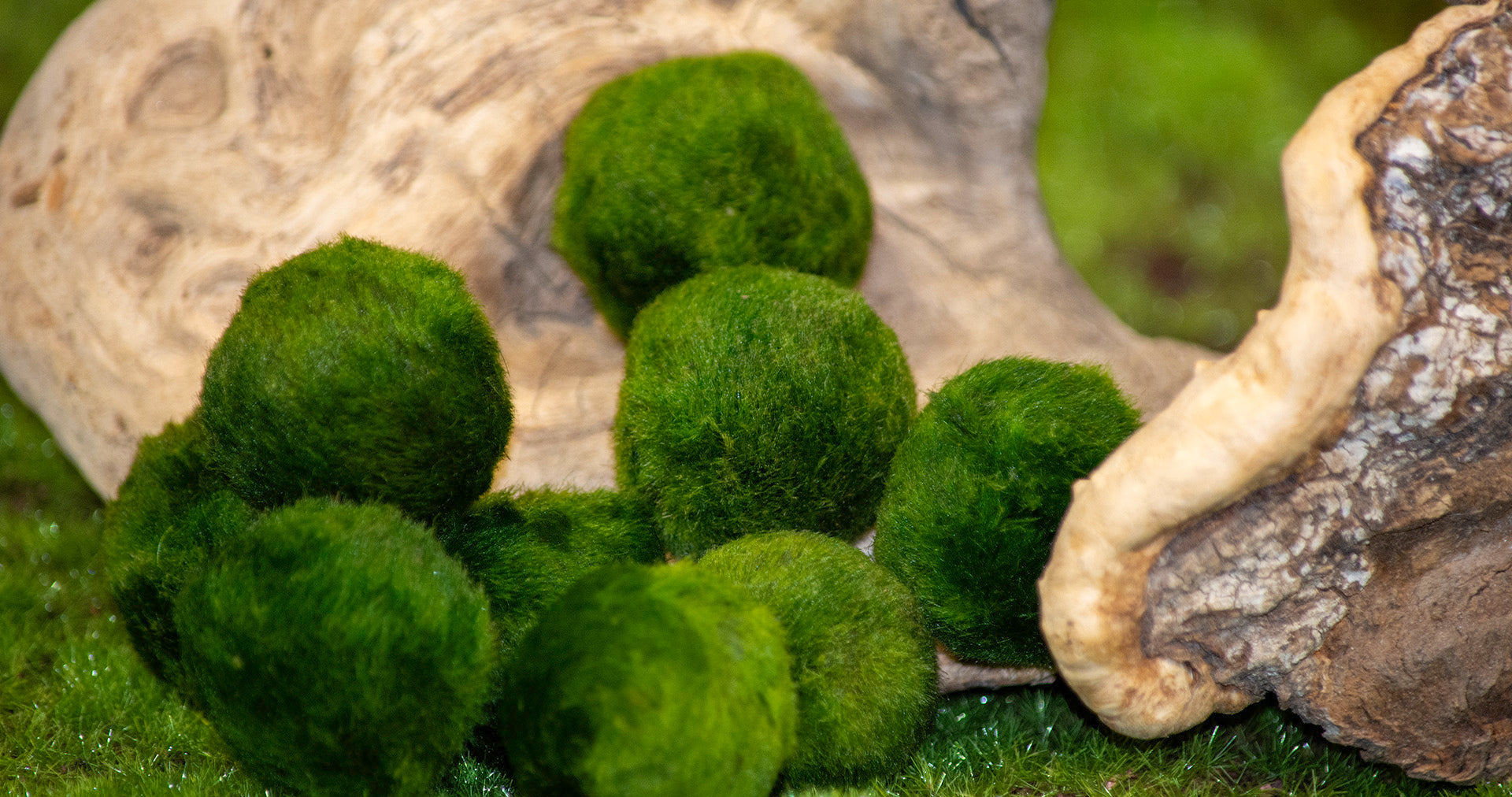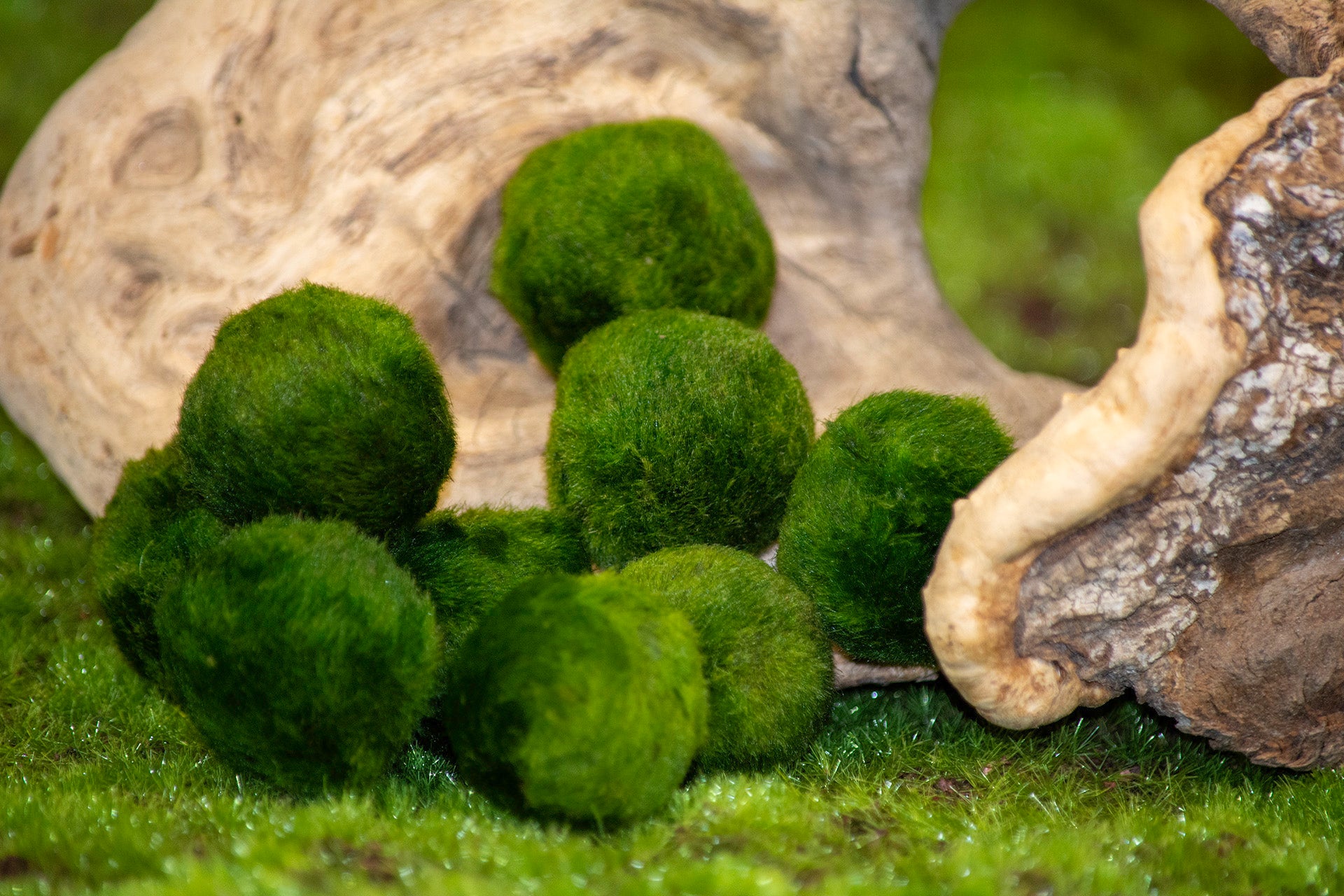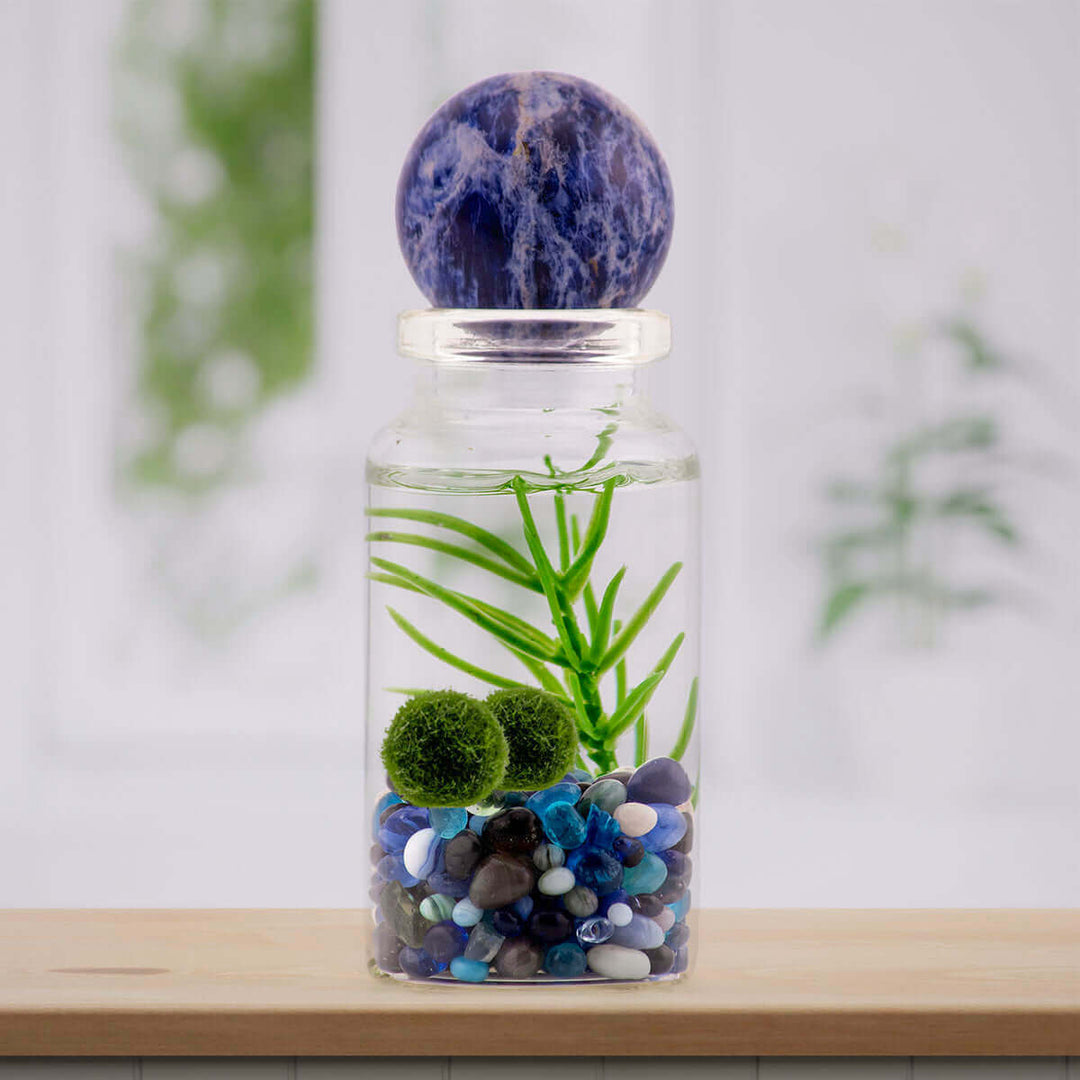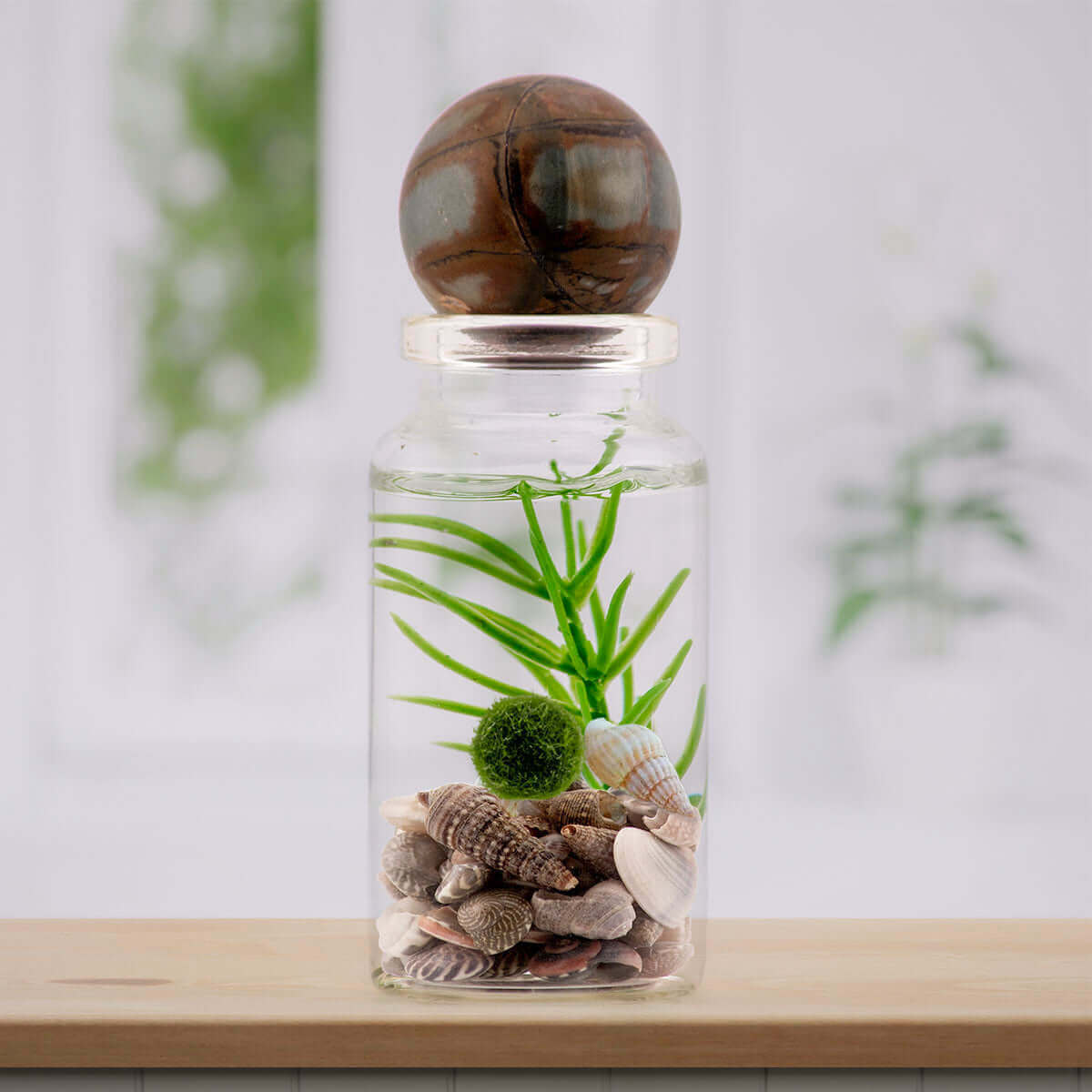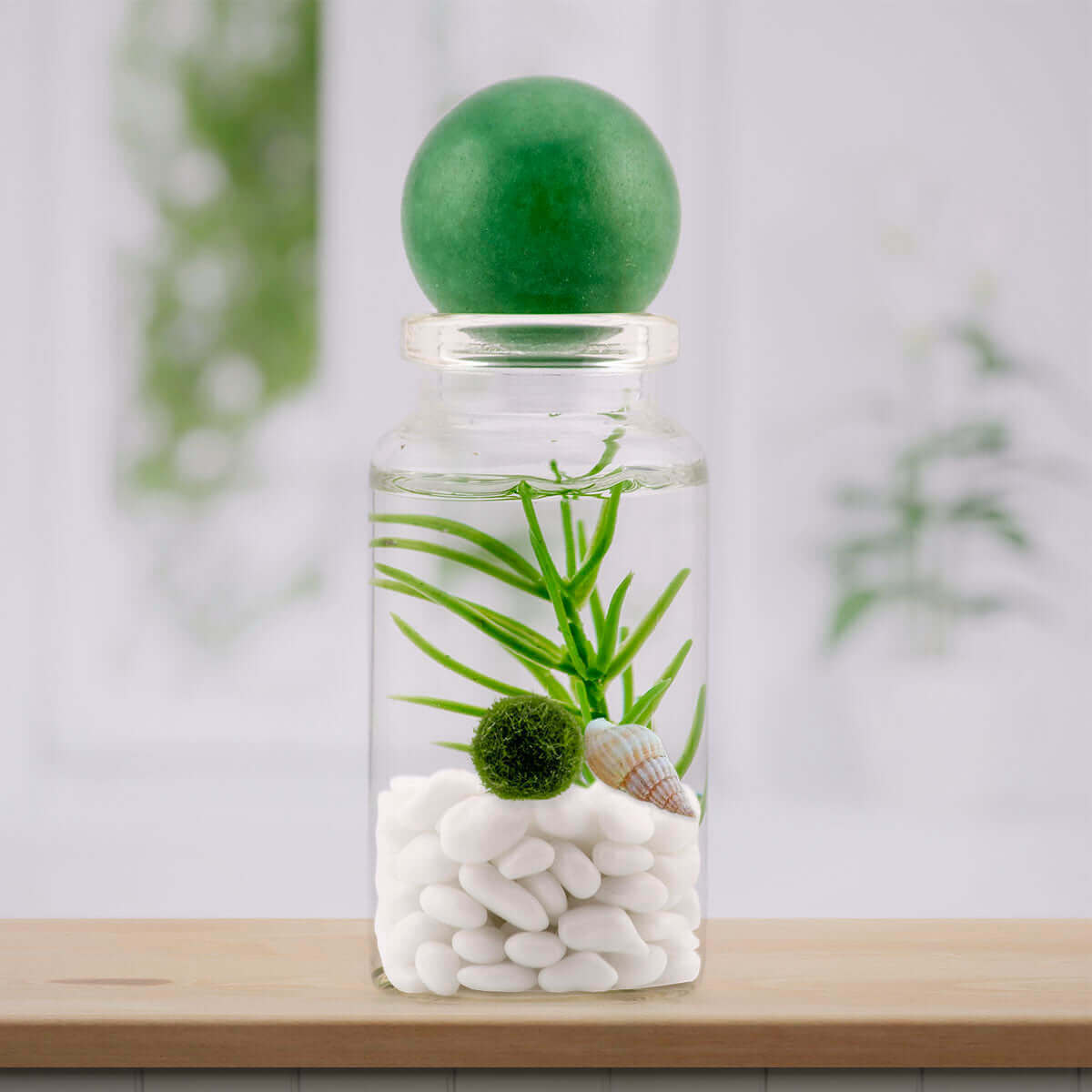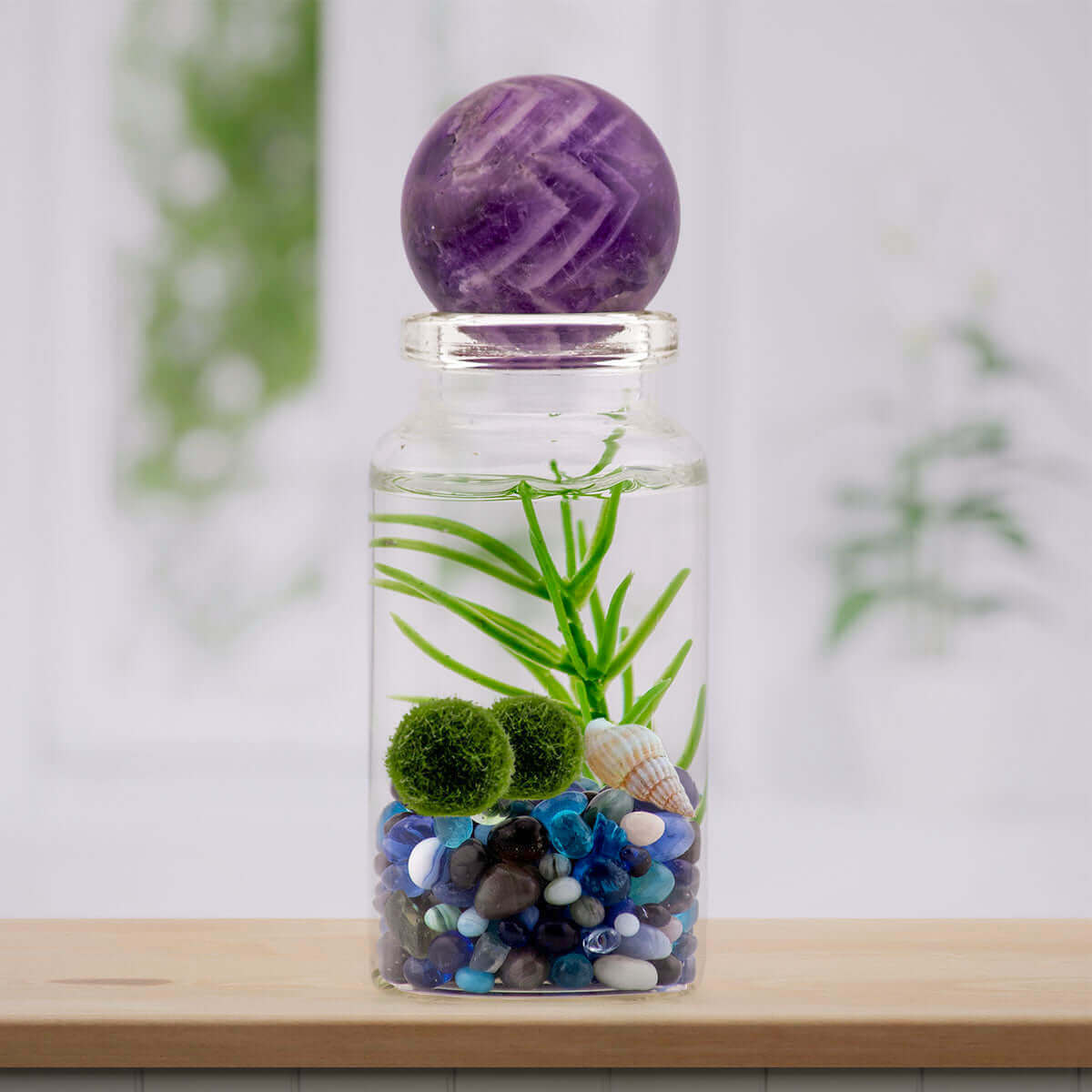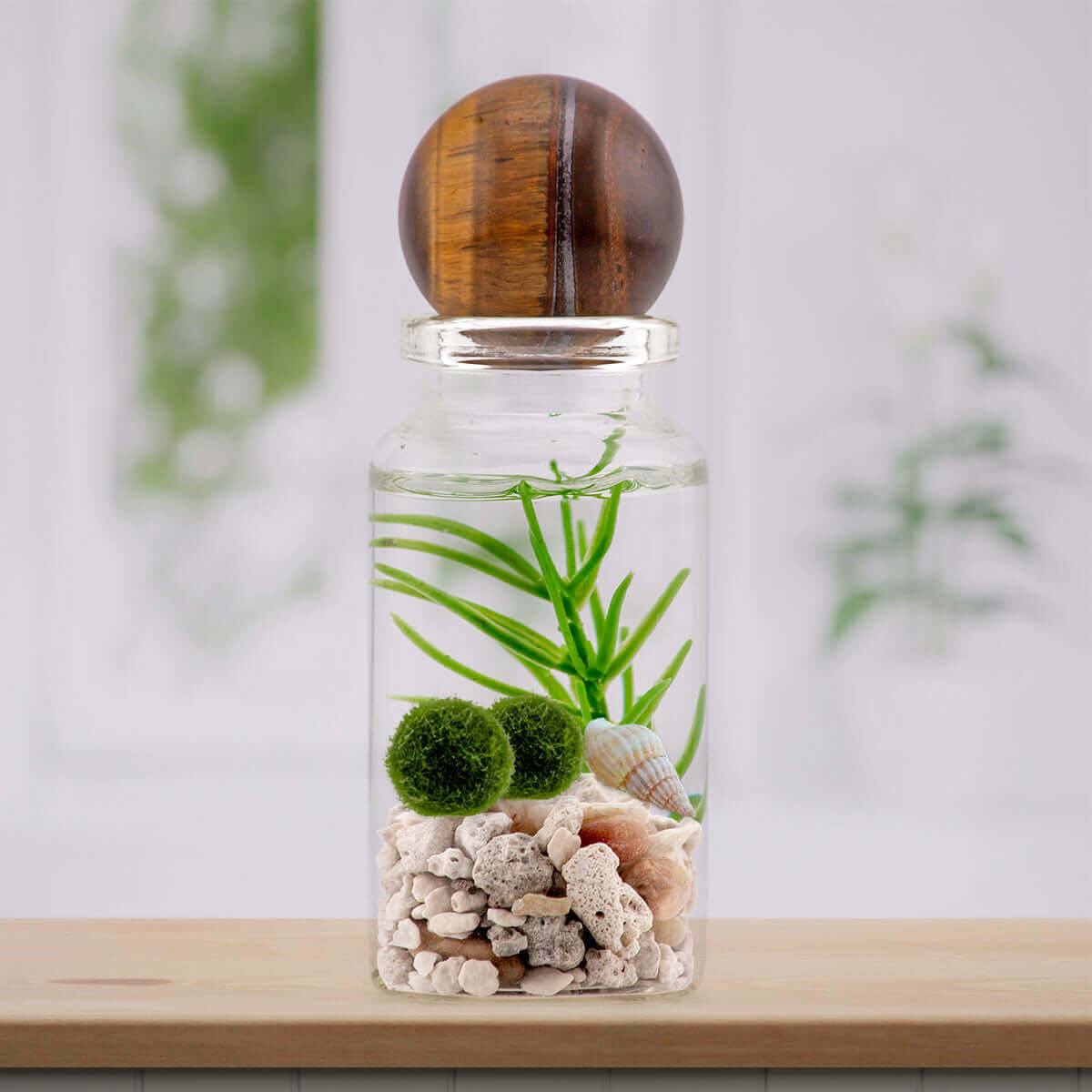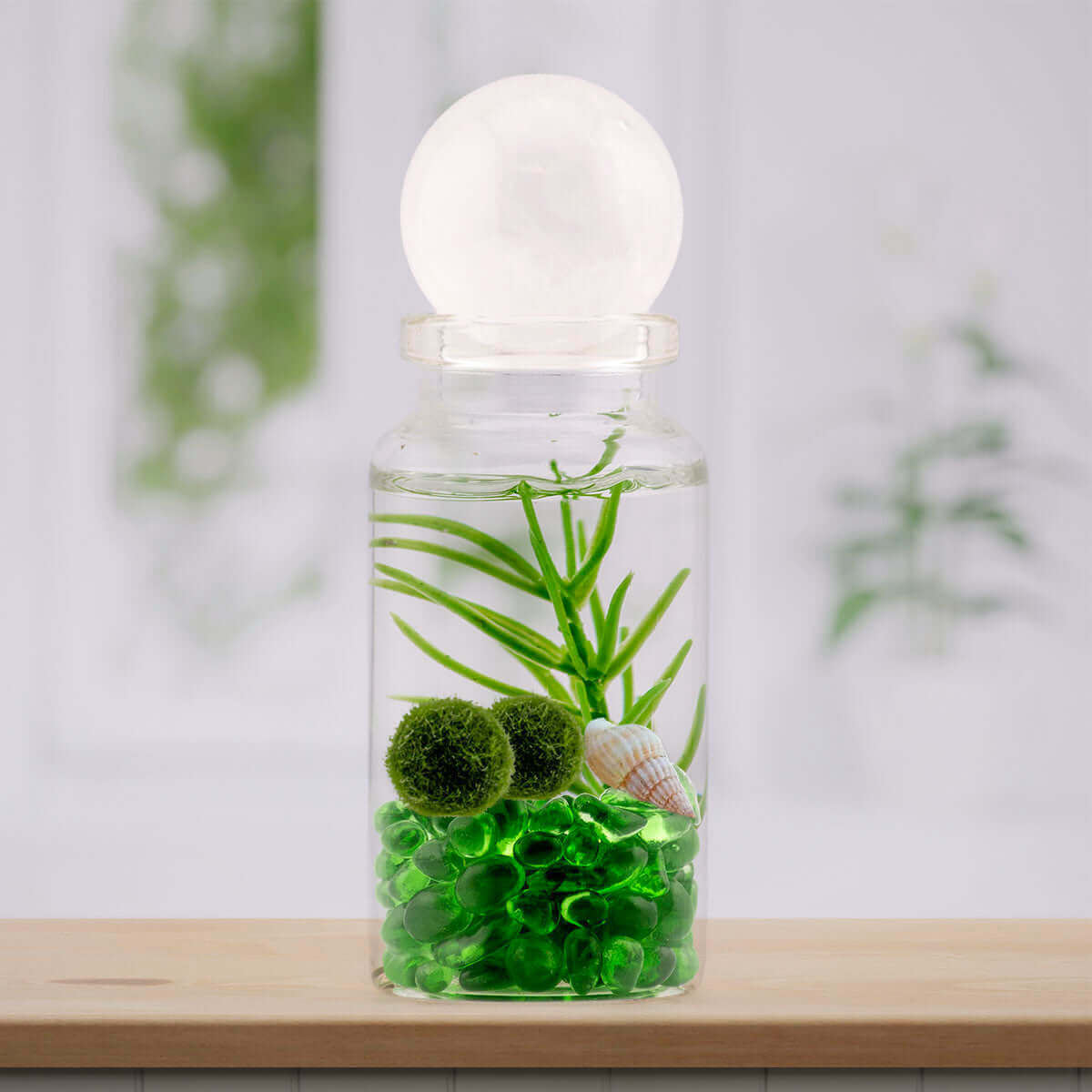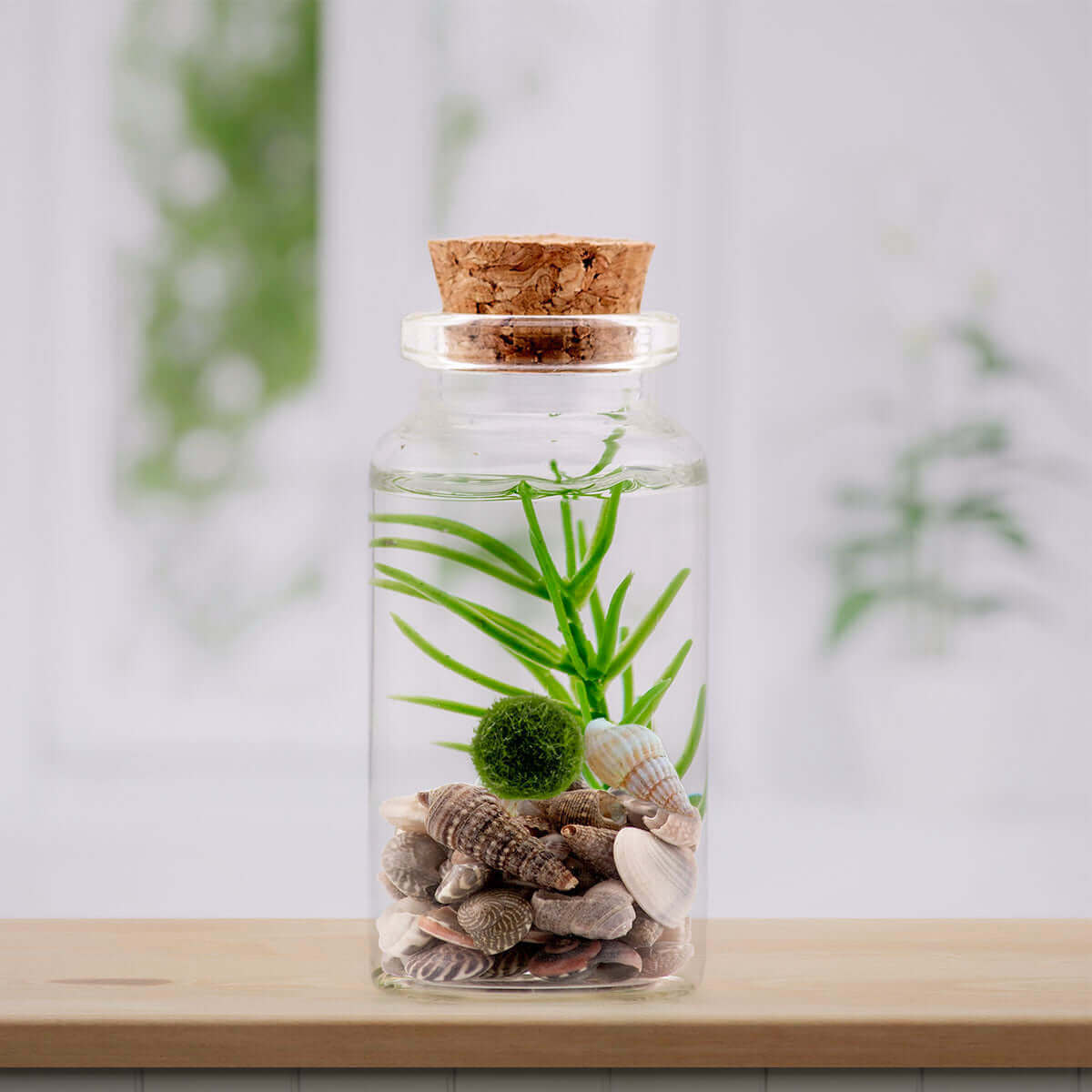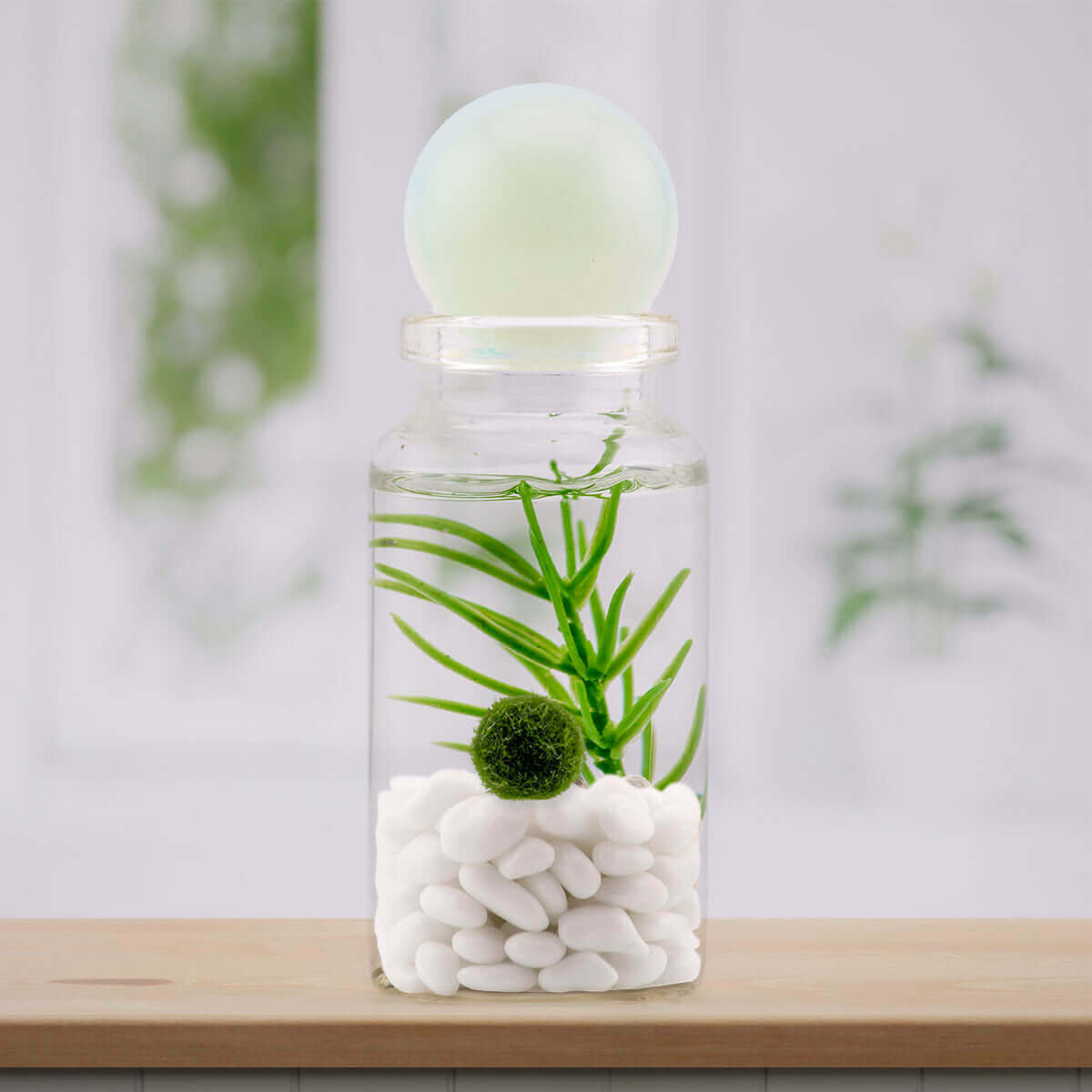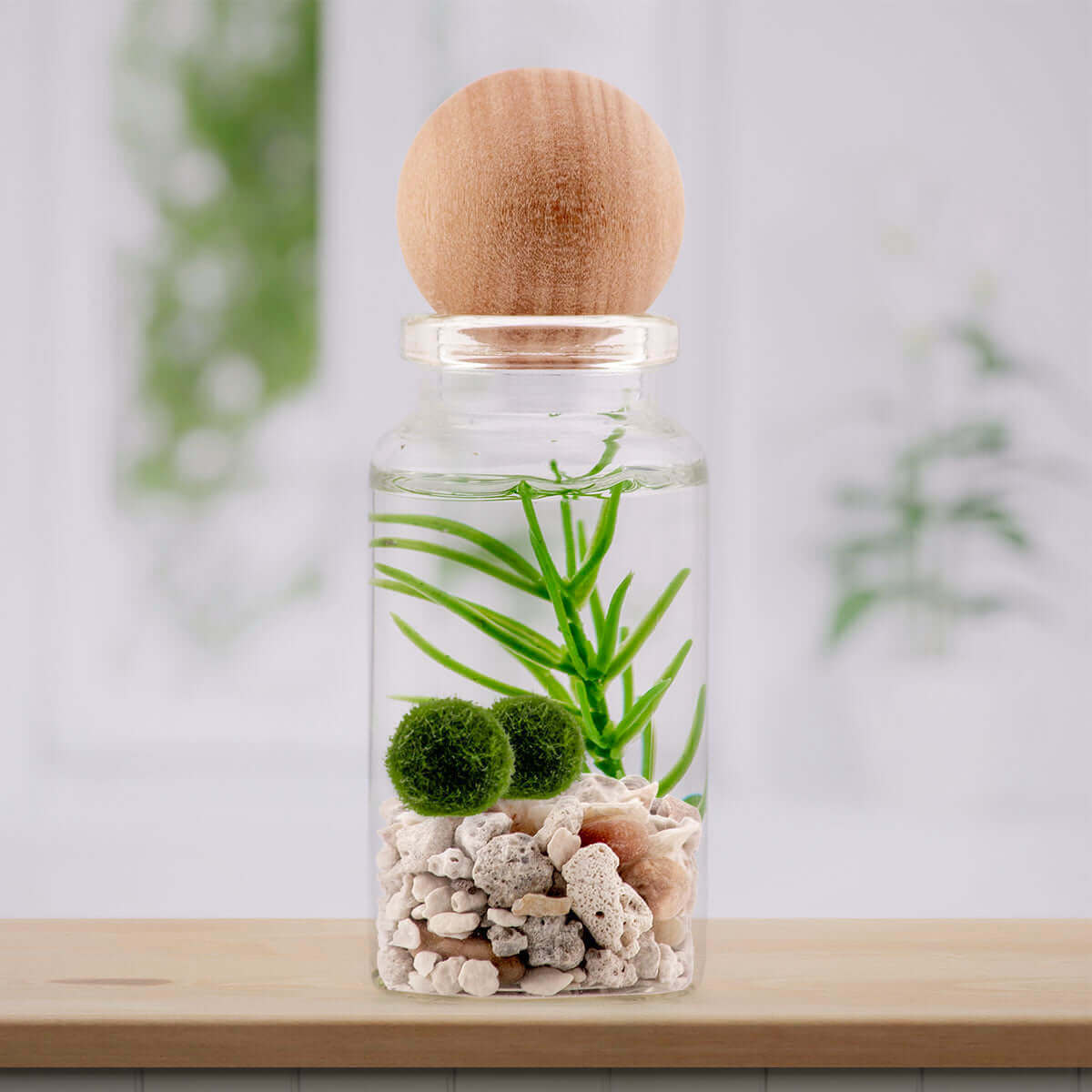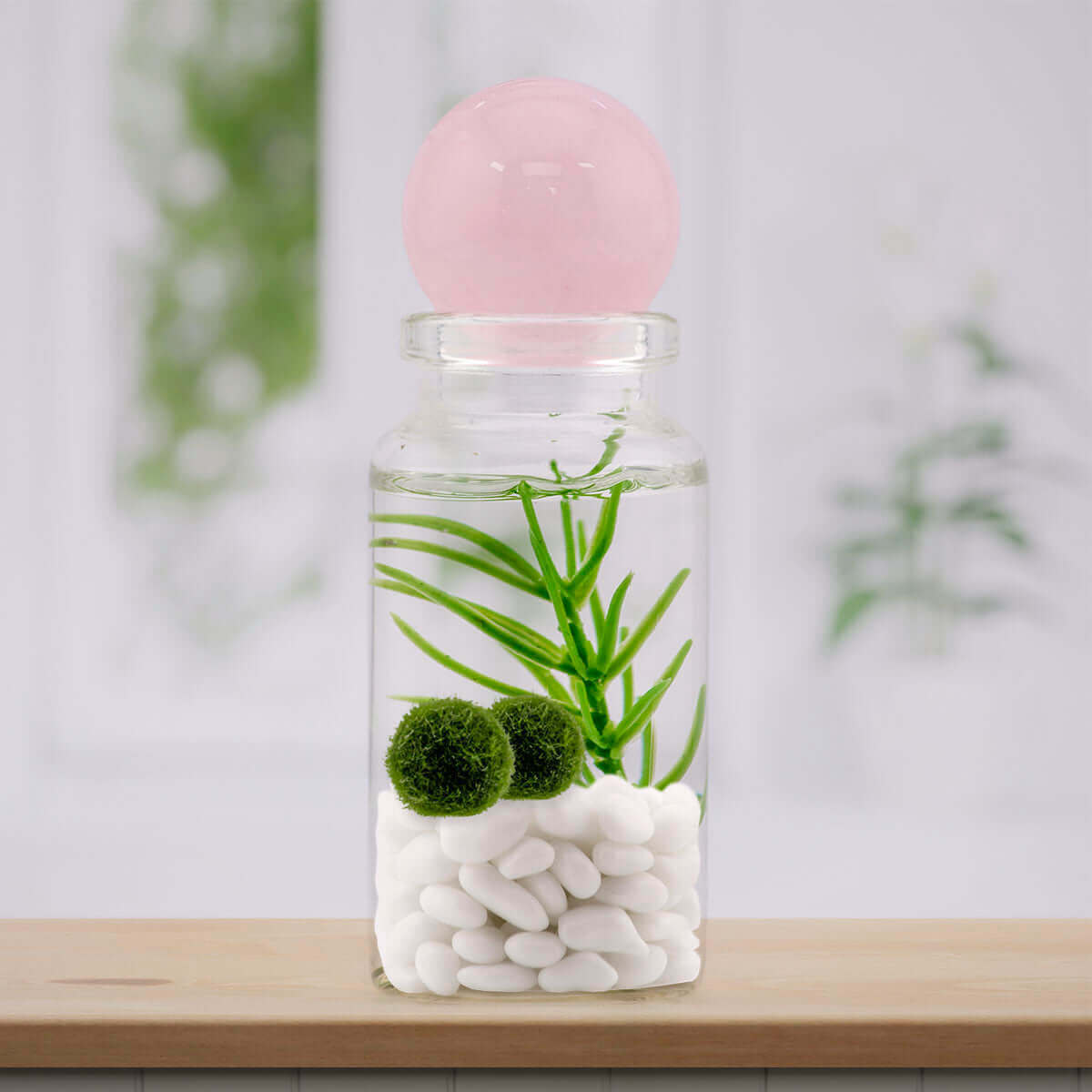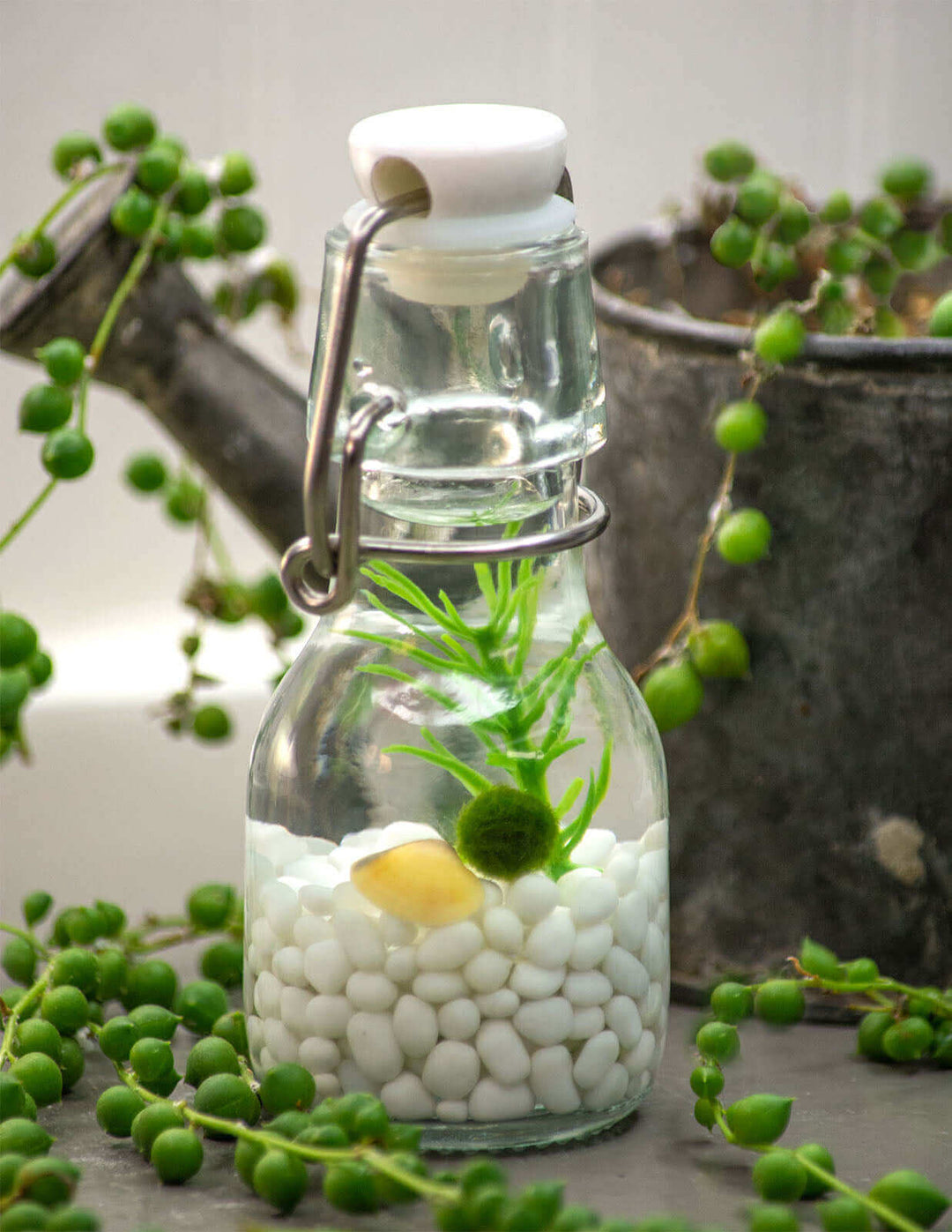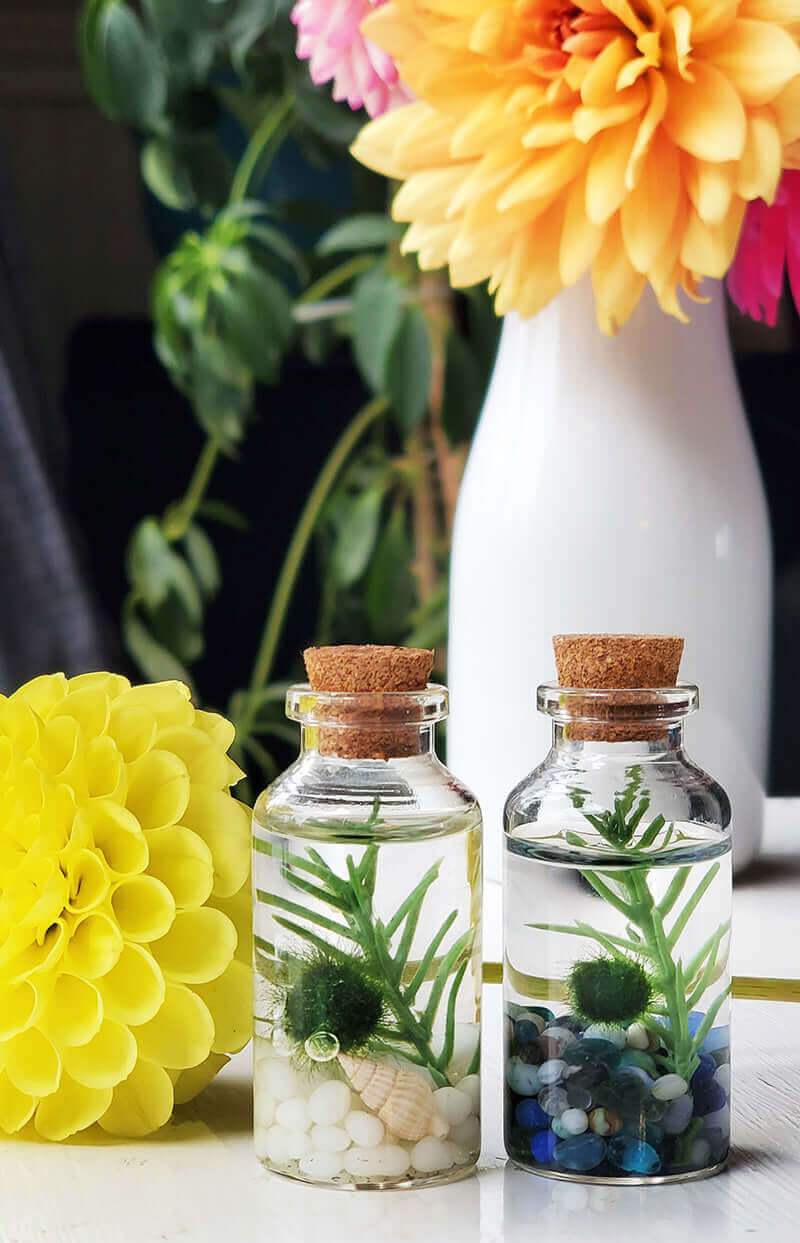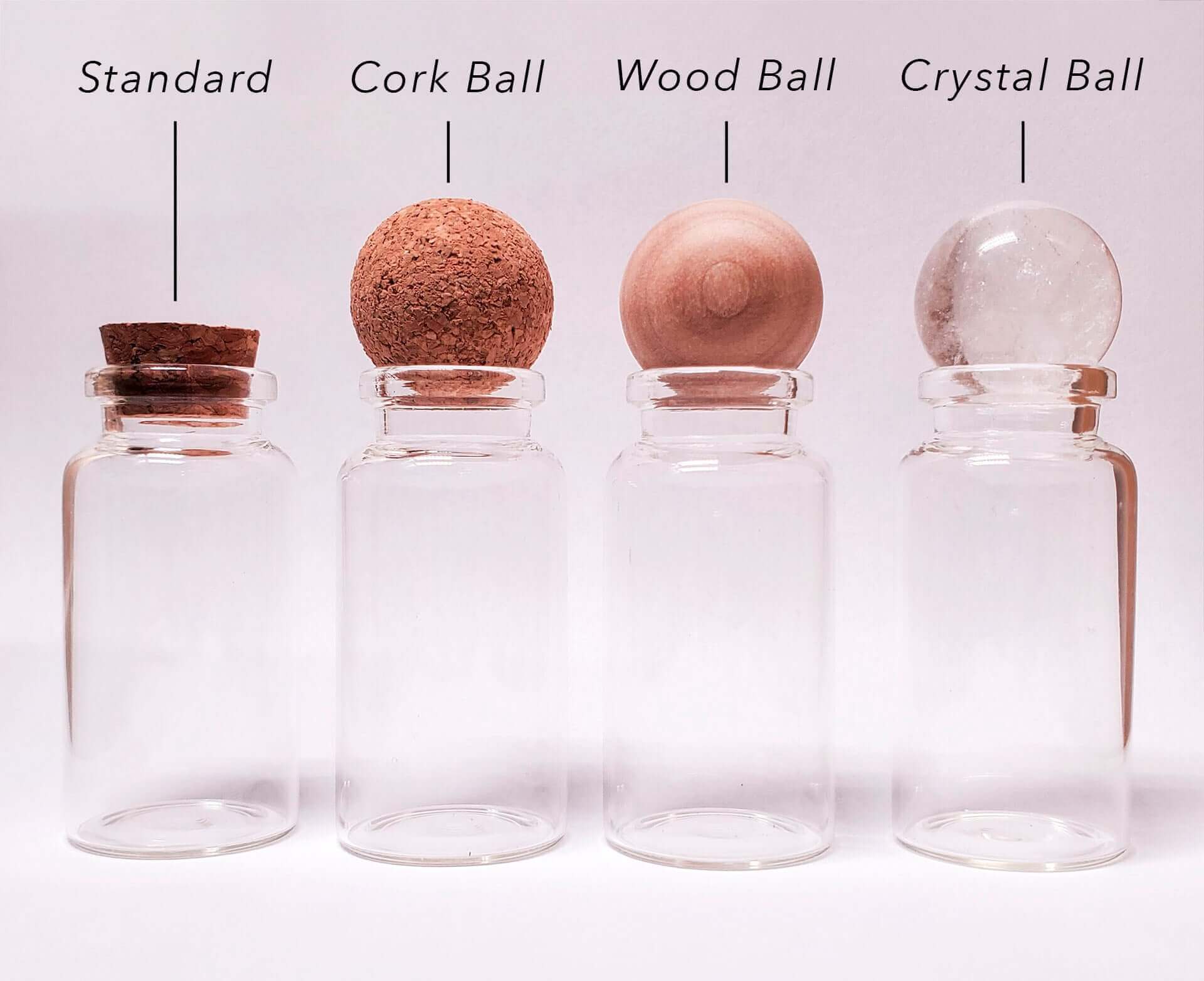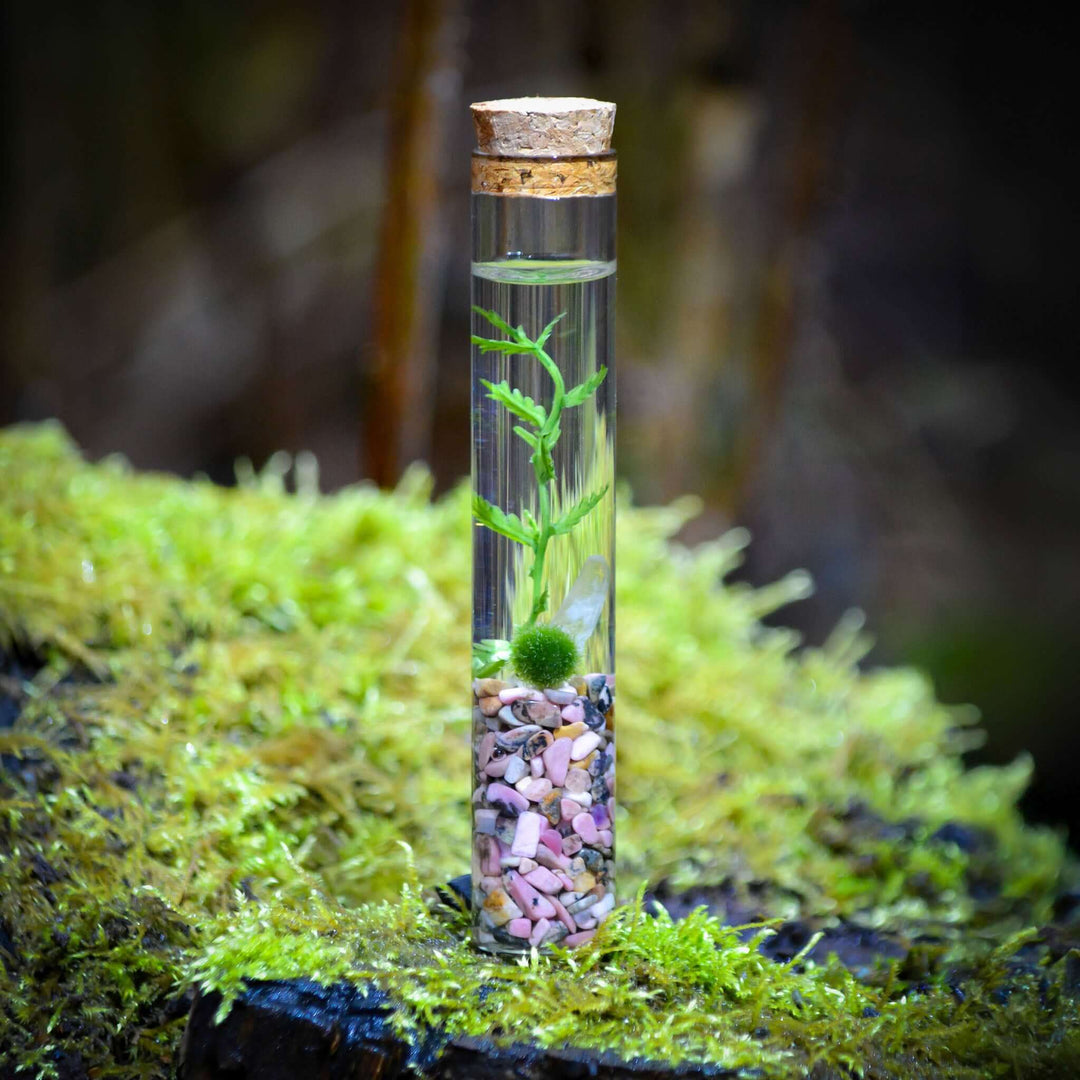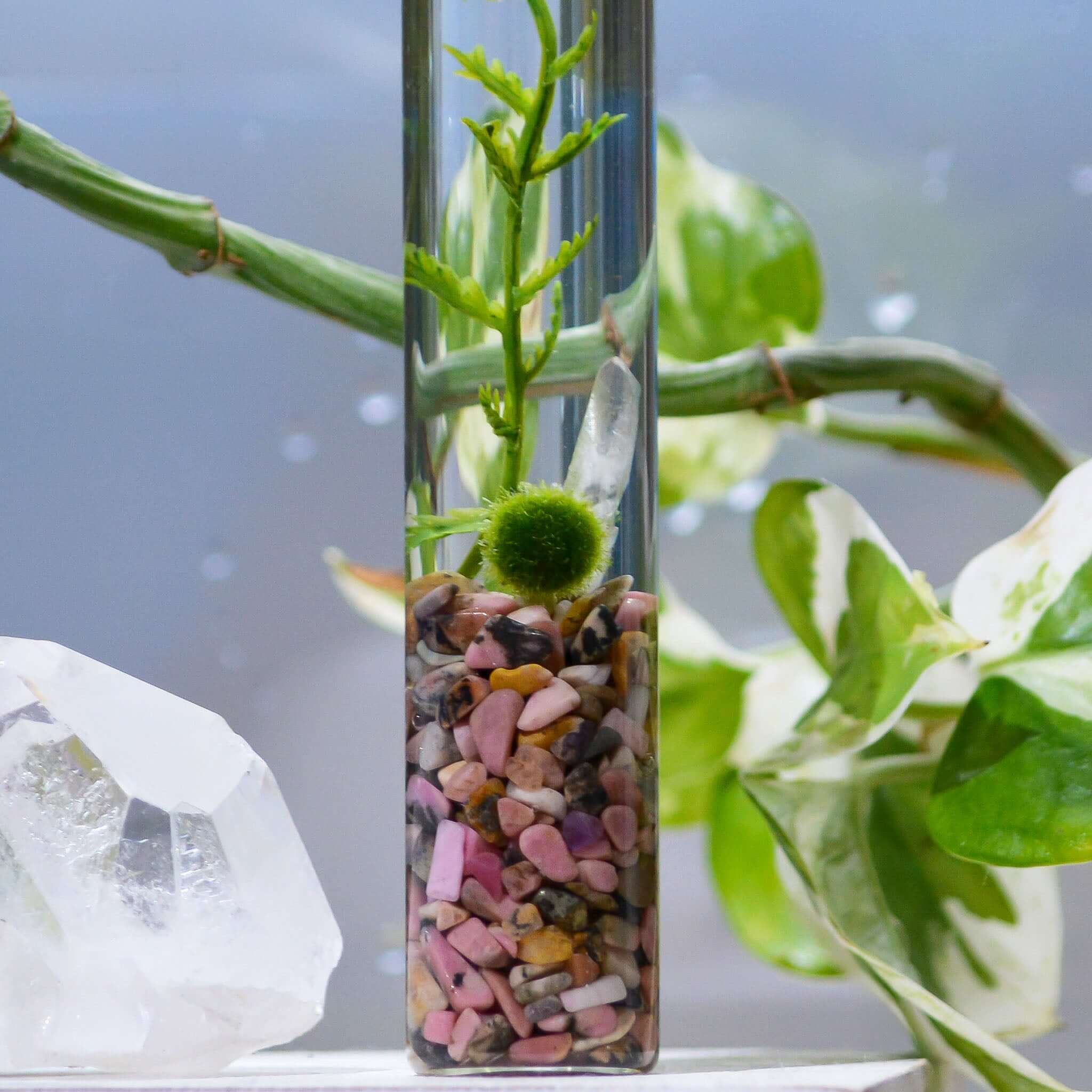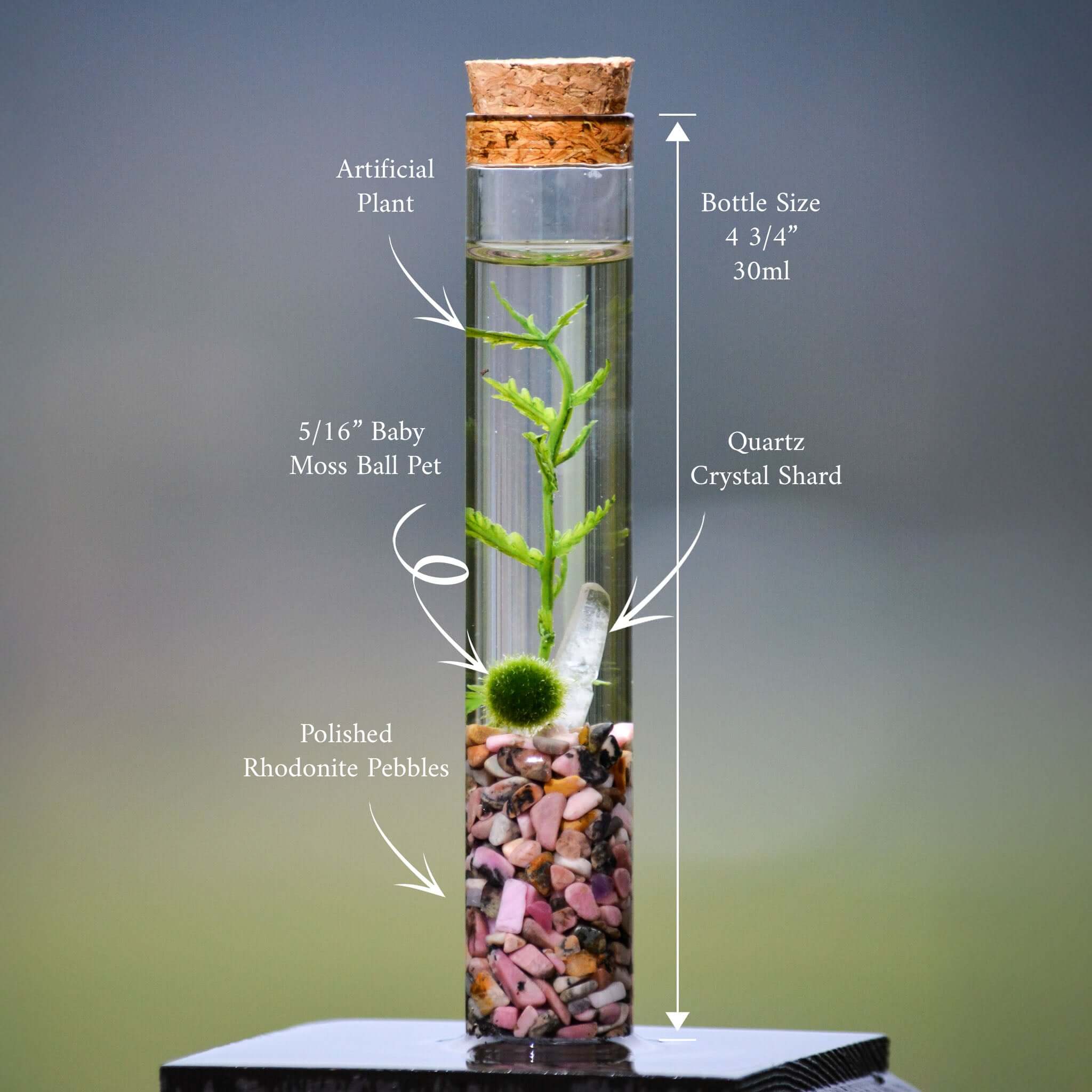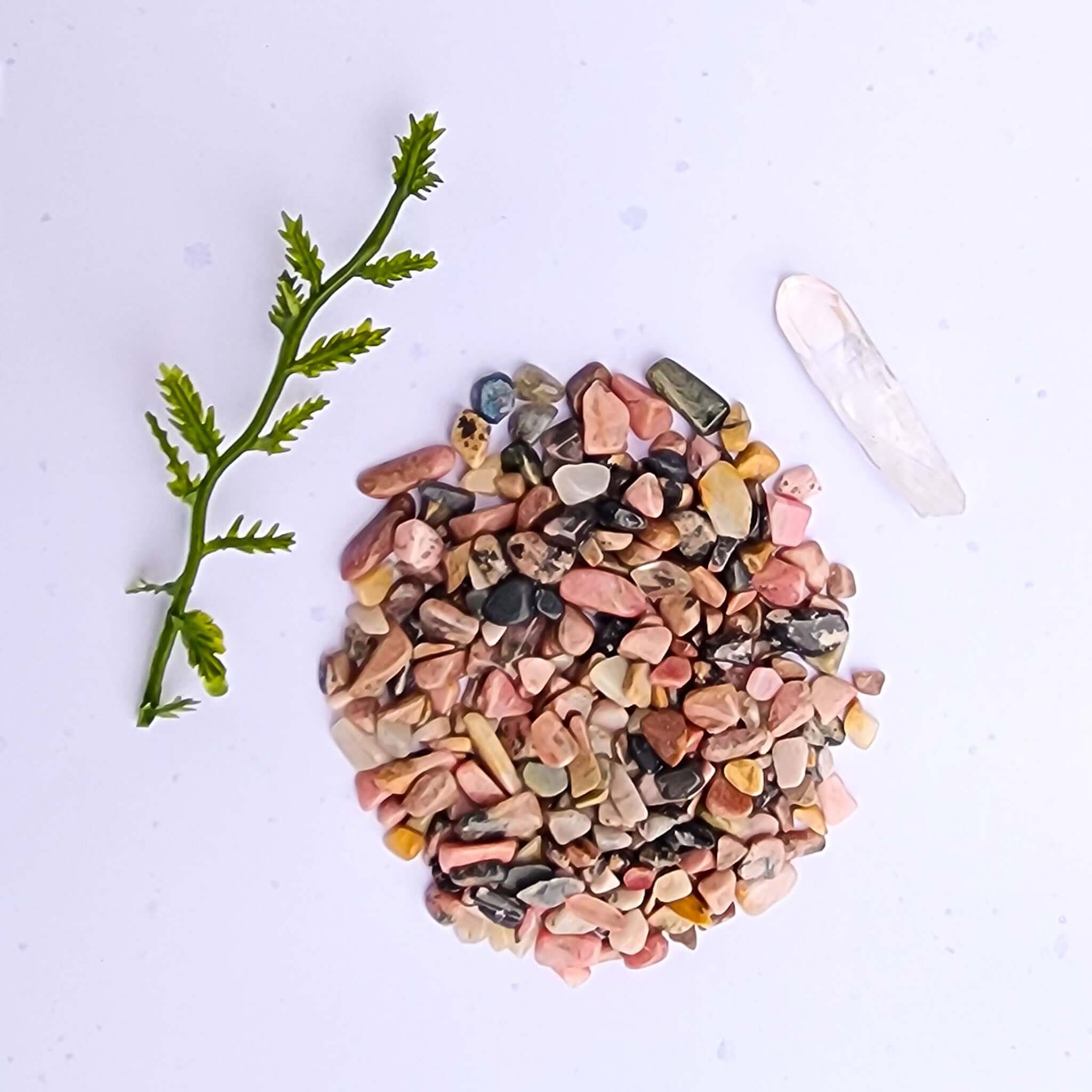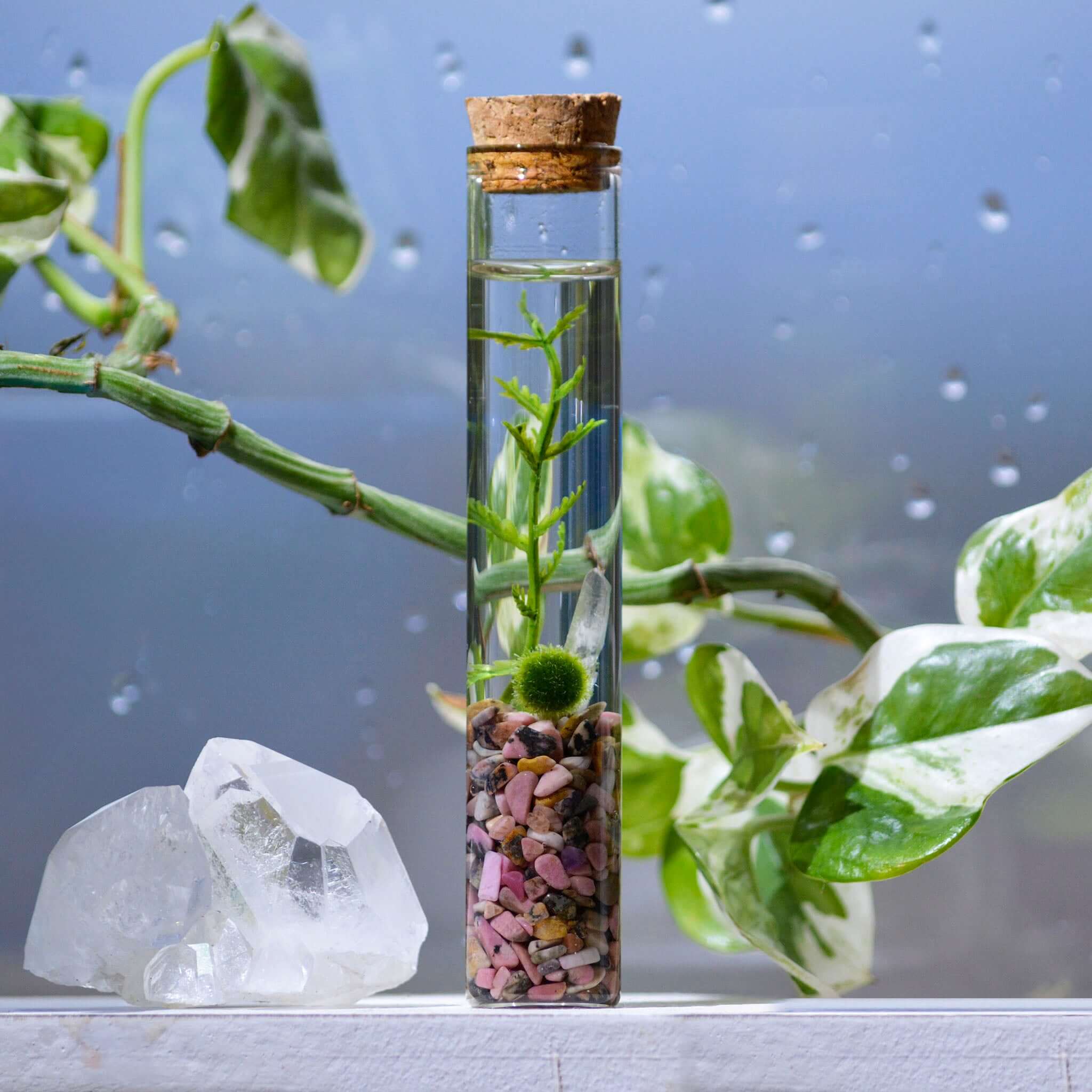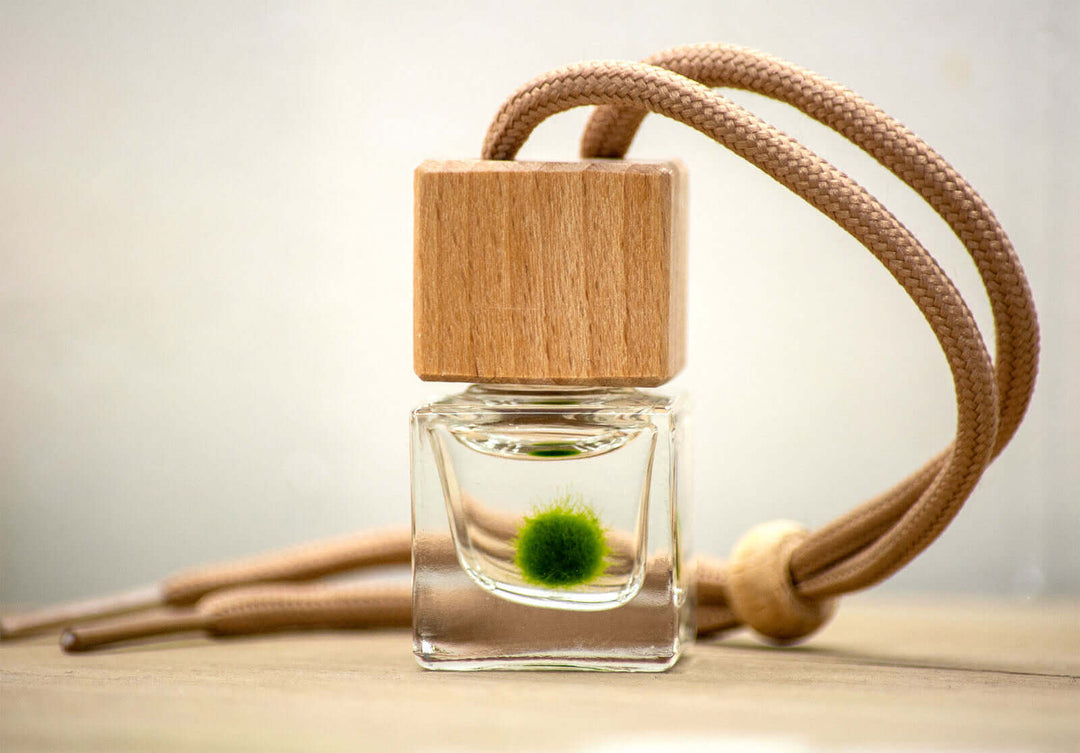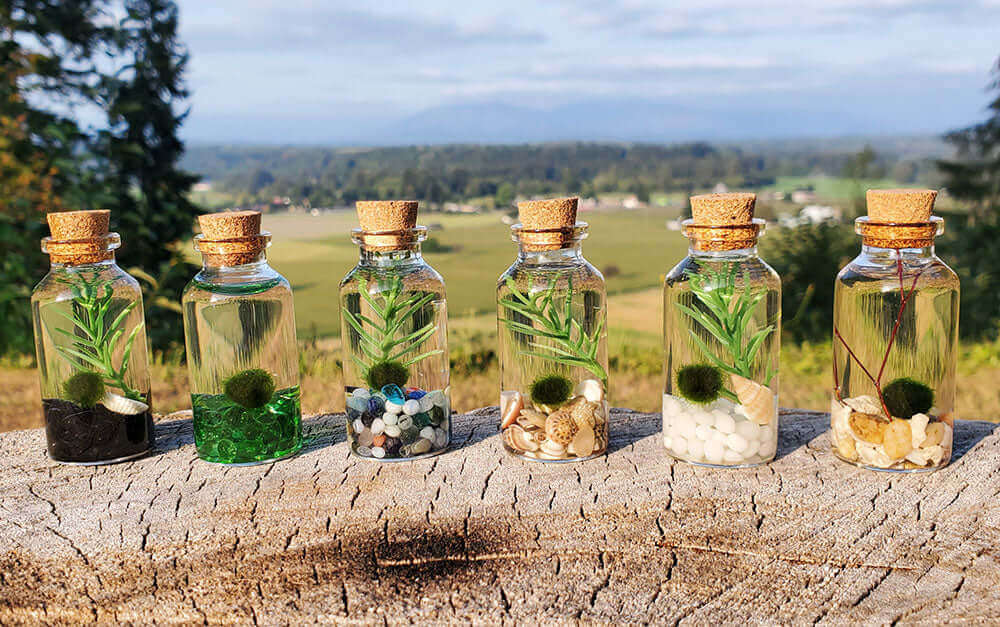How to Care for Marimo Moss Balls (Complete Guide)
Marimo Moss Ball Pet Care – Everything You Need to Know
Welcome to your ultimate guide to Marimo moss ball care! Whether you're a brand-new moss parent or a seasoned enthusiast, this page will show you exactly how to keep your Marimo Moss Ball Pets® healthy, happy, and thriving for years to come. From water changes and lighting to cleaning and rolling tips, you’ll learn everything you need to give your Marimo the best life.
Looking to create a full aquatic habitat? Explore our DIY moss ball terrarium kits to build the perfect home for your Marimo companion.
About Us: Moss Ball Pets® has been helping customers adopt real Marimo Moss Balls since 2016, sharing expert care knowledge with thousands worldwide.
Expert Tips & FAQs
Care Tips
Learn how to properly care for your Marimo Moss Ball to keep it healthy and thriving for years to come.
Yes, but they need oxygen exchange. Open the container weekly to prevent stagnation and allow fresh air circulation. Lack of airflow can cause poor water quality and harm your Marimo. Indirect light is also essential to keep it healthy.
Keep your Marimo in clean, cool water and out of direct sunlight. Change the water every two weeks to prevent stagnation. Gently roll the moss ball occasionally to maintain its round shape. Avoid extreme temperatures and keep it in low, indirect light for optimal health.
Use dechlorinated tap water, bottled spring water, or filtered water to keep Marimo healthy. Avoid distilled water, as it lacks essential minerals needed for growth. Regular water changes help maintain quality and prevent stagnation, ensuring optimal conditions for your moss ball.
Change the water every two weeks to maintain freshness and prevent stagnation. If the water appears cloudy or has debris, replace it sooner to ensure a healthy environment. Consistent water changes support Marimo’s long-term health and growth.
Marimo thrives in indirect or low light and should be kept away from direct sunlight, which can cause browning and stress. A soft LED light or natural ambient light works best. Placing Marimo in a shaded area with stable lighting conditions ensures steady growth and overall health.
Moss Ball Pets thrive in any clear container with cool, fresh water—be it a simple glass jar, a decorative vase, or even a fish tank. Placing them on a desk, a windowsill with indirect sunlight, or a cozy corner creates a calming and aesthetic vibe. Showcasing creative display ideas can inspire your audience and make your videos more engaging!
Rinse your Marimo in fresh water every two weeks. Gently squeeze it to remove debris and roll it between your hands to maintain its shape. Avoid soap or chemicals, as they can harm the algae. Regular cleaning prevents buildup and keeps it healthy.
Yes! Marimo Moss Balls are safe for aquariums and coexist well with bettas, shrimp, and snails. They help improve water quality by absorbing nitrates, reducing algae growth, and providing shelter for small aquatic creatures. Ensure proper water conditions to keep both Marimo and tank inhabitants healthy.
Keep your Marimo in water between 65-75°F (18-24°C) for optimal health. Extreme heat can cause browning and stress, while colder temperatures may slow growth. Maintain stable conditions by avoiding sudden temperature changes and keeping the moss ball in a shaded, temperature-controlled environment.
Before handling, wash your hands with antibacterial soap to avoid introducing harmful bacteria. Gently roll your Marimo Moss Ball in your hands every two weeks during water changes. This mimics natural water currents, preventing flattening and helping it maintain its spherical shape. Keeping the water clean and ensuring a stable environment further supports its structure and long-term health.
Marimo Moss Balls don’t need traditional "feeding" like fish do, but they do absorb nutrients from the water to stay healthy. Spring water is great because it naturally contains minerals that support growth. However, avoid distilled water, as it lacks essential nutrients. If your Marimo starts looking pale, you can occasionally add a tiny pinch of aquarium plant fertilizer (low-nitrate) to help. Otherwise, regular water changes with spring or dechlorinated tap water will keep it happy!
Yes, Marimo Moss Balls grow, but very slowly—only about 5 millimeters per year on average. Their growth depends on light, temperature, and water quality. Regular water changes and gentle rolling can help them maintain their shape. Avoid using distilled water, as it lacks essential nutrients for healthy growth.
🧠 Got a question about Marimo care? Open the chat bubble in the bottom-right corner to get instant help from our AI Moss Guru!
Common Concerns
Troubleshoot common Marimo issues like browning, floating, and maintenance problems with expert solutions.
Browning is caused by excessive light, poor water quality, or lack of care. Move it to indirect light, rinse it, and gently roll it to restore its health. A pinch of aquarium salt may help. Find troubleshooting solutions here.
Marimo turning yellow or white may indicate light overexposure, poor water quality, or nutrient deficiency. Move it to indirect light, perform regular water changes, and consider adding minerals like aquarium salt to restore color. Avoid extreme temperatures to keep it healthy. Find troubleshooting solutions here.
Floating happens when oxygen bubbles form inside during photosynthesis. This is normal, but if it persists, gently squeeze the moss ball underwater to release trapped air. Ensure it’s not drying out and check water quality for balance.
It’s rare, but they may carry microorganisms or tiny hitchhikers. To prevent contamination, quarantine new Marimo in a separate container for at least a week before adding them to an aquarium. Rinsing them in clean water can help remove unwanted organisms.
Some regions have restricted Marimo Moss Balls due to invasive species concerns. However, they are legal in most places when purchased from reputable sellers. Always check local regulations before buying. Find out about bans and legal status.
🚨 Click here to find solutions fast — troubleshoot common Marimo Moss Ball problems with our easy guide.
Fun Facts
Discover fascinating and quirky facts about Marimo Moss Balls that make them such a unique and beloved aquatic plant.
Naming your Marimo can be fun! Popular choices include Mossy, Marimoko, Kelp, Bubbles, Lucky, and Greenie. Some owners name them based on personality, color, or pop culture references. Get inspired and find the perfect name. Check out our fun moss ball name ideas.
Yes! In Japan, Marimo Moss Balls symbolize good luck, love, and longevity. They are often gifted as tokens of prosperity and happiness. Their cultural significance has made them a cherished aquatic plant worldwide. Discover their lucky symbolism in our culture.
Yes! Marimo Moss Balls add a natural, aesthetic touch to aquariums, terrariums, or decorative glass vases. Their low-maintenance nature makes them perfect for enhancing any indoor space. They can be placed in minimalist jars or displayed in creative aquatic setups for a calming, green accent.
Marimo grow about 5mm per year under ideal conditions. Their growth depends on water quality, temperature, and light exposure. Regular water changes, gentle rolling, and stable conditions encourage steady, healthy growth while maintaining their round shape.
Marimo Moss Balls reproduce through budding and splitting. Small offshoots form on mature Marimo and can be gently separated to grow into new moss balls. Providing optimal water conditions, regular rolling, and consistent care helps encourage this natural process. Learn more about Marimo budding and splitting.
🎉 Click here to uncover more fun — discover how Marimo Moss Balls bud and create new companions!
Scientific Insights
Explore the biology and ecological role of Marimo Moss Balls, from photosynthesis to their natural habitats.
Marimo is a rare form of algae (Aegagropila linnaei) that naturally forms into spherical shapes due to water currents in freshwater lakes. Unlike typical algae, Marimo grows in a velvety, ball-like structure, making it a unique and low-maintenance aquatic plant.
Despite their name, Marimo Moss Balls are not moss but a rare type of algae (Aegagropila linnaei). In the 1800s, they were mistakenly called 'moss' due to their velvety texture and green appearance, and the name stuck. Water currents naturally shape them into spheres in the wild, making them unique among aquatic plants.
Marimo Moss Balls are found in cold, freshwater lakes in Japan, Estonia, Iceland, and Scotland. They thrive in low-light, slow-moving waters, and cool temperatures. Natural water currents roll them into spheres, making them a rare and fascinating aquatic plant!
With proper care, Marimo Moss Balls can live over 100 years! Some of the oldest recorded Marimo have been kept for more than 200 years in Japan. Their slow growth and ability to adapt to stable conditions make them one of the longest-living aquatic plants.
Marimo Moss Balls oxygenate water, absorb nitrates, and reduce algae growth, making them excellent for aquariums. They help improve water quality by maintaining balance and providing shelter for small aquatic creatures. Their slow growth and natural filtration make them a valuable addition to healthy aquatic ecosystems.
🔬 Learn more about Marimo's wonders — unveil the underwater oddities of nature's strangest algae.
Historical Information
Uncover the rich history and cultural significance of Marimo Moss Balls, from ancient legends to modern-day traditions.
Marimo Moss Balls were first discovered in Lake Akan, Japan, in the early 1900s. The name 'Marimo' was coined by Japanese botanist Tatsuhiko Kawakami, combining 'mari' (ball) and 'mo' (aquatic plant). They became a national treasure due to their rarity and cultural significance, symbolizing good luck and longevity in Japan.
Marimo Moss Balls gained global popularity due to their low-maintenance care, unique appearance, and cultural significance. In Japan, they were cherished as symbols of good fortune. In the U.S., Moss Ball Pets introduced them to mainstream audiences, making them a favorite among aquarium enthusiasts and nature lovers.
Yes! According to Japanese legend, Marimo symbolizes eternal love and devotion. In the 1800s, a pair of lovers, unable to be together, transformed into Marimo so they could remain united forever. This romantic myth has made Marimo a popular gift symbolizing lasting love. Read about the famous love story.
The Marimo meaning is deeply rooted in symbolism and tradition. Originating from Japan, the name comes from ‘mari’ (meaning bouncy ball) and ‘mo’ (referring to aquatic plants). Marimo are seen as symbols of luck, love, prosperity, and longevity. Their slow, steady growth and ability to thrive with minimal care represent patience and resilience, making them a cherished gift in many cultures.
🏯 Click here to dive deep into history — explore the fascinating history and legends of Marimo Moss Balls.
💡 Tip: Ask Our AI Moss Guru!
Got questions? Our AI Moss Guru is the most knowledgeable source of Marimo Moss Ball wisdom on the internet! Whether you’re curious about care tips, fun facts, or anything else Moss Ball-related, just look for the chat in the bottom-right corner of your screen and spark up a conversation. It’s like having a moss expert in your pocket—24/7!




